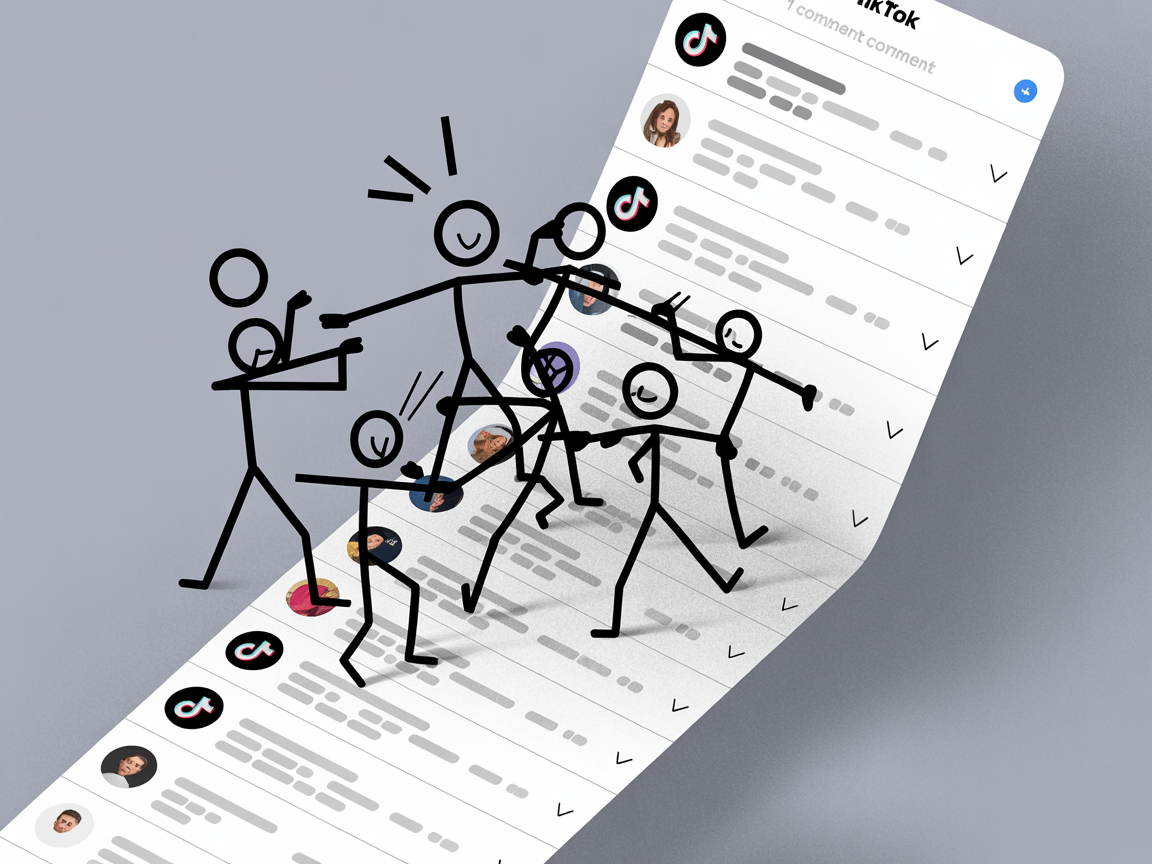Your brand goes viral. It feels like a win…until the competitors start showing up in the comments.
They’re not clapping for your success. They’re using your moment to slide into the spotlight themselves. A snarky one-liner here, a cleverly veiled swipe there, and suddenly your comment section isn’t a celebration, it’s a battlefield of who can outdo another’s quip for more likes and attention.
Welcome to the new rules of social.
As brands jockey for attention on TikTok and Instagram, the post is just the beginning. The real action? It’s in the comments. And if you’re not protecting that space, you’re leaving the door wide open for trolls, haters, and worse, your direct competitors.
And let’s be honest: snarking on a brand in the comments is a risky move (which we’ll highlight further down).
The New Battleground? Your Comment Section
Challenger brands have figured it out: comments are where the culture lives.
It’s where audiences bond, creators riff, and the algorithm decides what content gets pushed to the top. If your brand’s post is taking off, it’s almost guaranteed that another brand is hovering, ready to drop a top comment and hijack the engagement.
And it works. TikTok’s layout makes comments hyper-visible. A clever remark with just enough edge can shoot to the top, giving a lesser-known brand exposure they didn’t earn and access to your hard-won audience.
This isn’t just opportunism. It’s a strategy. A playbook designed to steal your moment, dilute your brand voice, and siphon followers.
If your brand doesn’t have a comment strategy, you’re not just behind; you’re vulnerable.
Going Viral Exposes More Than You Think
Every social media manager dreams of a viral moment. But here’s what doesn’t get talked about enough: Virality doesn’t just elevate your message; it opens you up to chaos.
Comment sections can shift from celebration to war zone in hours. One minute it’s fire emojis and love. The next? Trolls are stirring the pot. A competitor drops a snide comment. Your audience starts arguing with itself.
Take the recent Duolingo vs. Lingoda example, which Jack Appleby, creator of the weekly newsletter Future Social, wrote about in a May issue.
Duolingo, known for its bold voice and playful tone, announced an AI-first shift. That alone was enough to trigger backlash in the comments from users skeptical of AI’s role in education. However, Lingoda, a competing language learning app, entered the chat with a comment that not only piled on but also scored over 17,000 likes.
It was a strategic sucker punch. The comment went viral. Lingoda suddenly had attention it hadn’t earned, riding the wave of a brand 10 times its size. Did it hurt Duolingo long-term? Probably not. But did Lingoda win clout off of someone else’s narrative? Absolutely.
Blocking Competitors Isn’t Petty, It’s Strategic
Let’s clear something up: blocking a competitor isn’t a sign of insecurity. It’s a sign that you understand how momentum works.
Plus, your customers are watching.
“When consumers rank the most important brand content traits, authenticity and relatability top the list. Consumers also say they’re tired of sexually explicit brand voices. Instead of floating along the sea of sameness or being contrarian for the sake of it, brands should carve out an identity that is true to them.” Sprout Social Index 2025
Viral moments take work to build. So when a competitor pops up in your comments mid-surge, it’s less about engagement and more about strategic distraction. Don’t let your narrative become theirs.
In the Lingoda vs. Duolingo case, blocking would’ve been a smart, measured move. By removing the comment and cutting off the repeat interference, Duolingo could have maintained control of its message. And if Lingoda had responded publicly? It would’ve only reinforced Duolingo’s dominance, drawing more attention to the brand they were trying to undermine.
There’s a misconception (especially among younger marketers) that blocking looks bad. That it signals fear or control issues. In reality, it’s the opposite.
You’re not silencing the conversation. You’re protecting the context. Your community isn’t a free-for-all. It’s a brand asset. You wouldn’t let a competitor interrupt your product launch IRL, so why let them do it in your comments?
The Framework: Engage, Delete, or Block?

So, how should your brand respond when the comment section gets noisy?
Here’s a simple framework to guide the chaos:
Engage
Use this when the comment is funny, on-brand, or adds value to the conversation. It could be a fan hyping you up, a creator referencing your product, or even a friendly brand doing a drive-by with no bad intentions. Engaging here builds connection and trust.
Delete
If the comment is off-topic, toxic, spammy, or clearly trying to stir up drama, get rid of it. Fast. Screenshot culture moves quickly. Deleting a comment before it spreads is like fireproofing your feed.
Block
This is your firewall. If a competitor repeatedly comments on your content (especially with shade, self-promotion, or disruptive energy), block them. You’re not obligated to provide them a platform. This is about defending your brand’s voice, not playing social games.
Pro Tip: Have a policy in place before you go viral. Your response shouldn't depend on instinct; it should be part of your brand strategy.
Also, don’t forget about your influencer partners. If you’re working with creators and running paid campaigns, they need guidance on how to moderate comments, too. Your brand’s tone doesn’t end with the caption. It continues to live on in the replies.
Comments Are Strategy, Not Cleanup
Maybe it started out cute: brands trading jokes in the comments, hopping into conversations, showing personality. But now? It’s a minefield. For both brands and the social media managers running point, one offbeat reply or one shady competitor can turn a viral win into a full-blown crisis.
Brand-on-brand banter might spike engagement, but it doesn’t always play out the way marketers hope.
One study found that when Chick-fil-A and Wendy’s initiated jabs during the viral Popeyes chicken sandwich feud, both were hit with backlash in the comments, while Popeyes, the target, thrived. They saw a 426% increase in Google searches and a spike in in-store visits, while their competitors saw no lift at all.
The takeaway? In the battle for visibility, being the responder often pays off more than being the instigator, especially in the comments.
As platforms double down on short-form video, live reactions, and creator content, the comments are more than important. They’re everything.
Because here’s the truth: your post might go viral. But it’s what happens in the comments that decides whether you stay in control. So, who owns your comment section?



.png?width=300&height=300&name=Minimal%20Photocentric%20Productivity%20Blog%20Banner%20(3).png)
